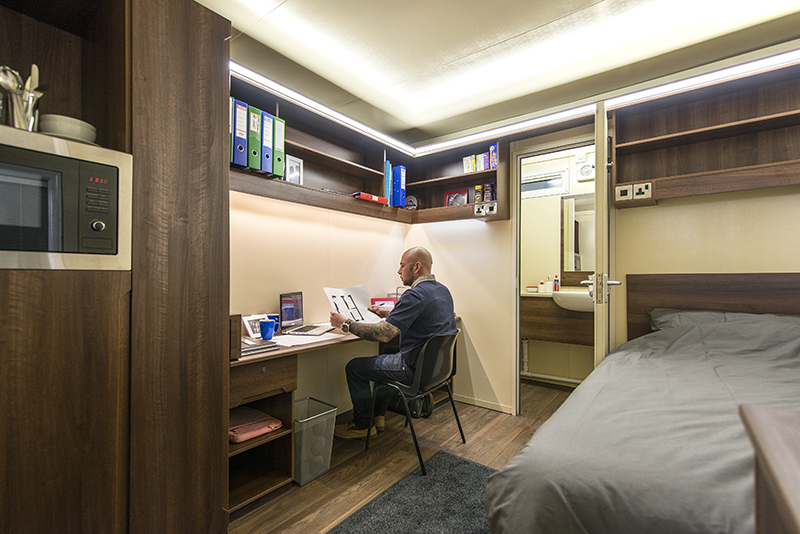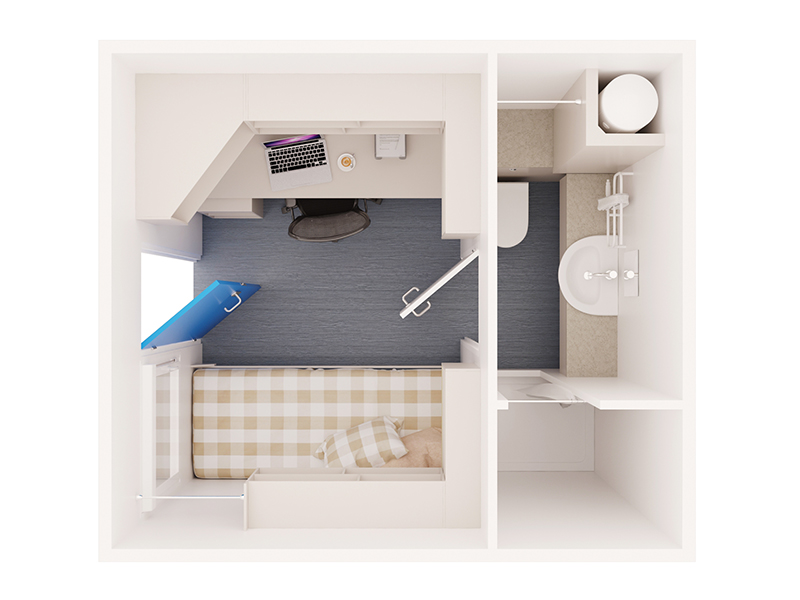Luke Rothwell, MD at welfare unit specialist Bunkabin, explains how accommodation design can impact workplace efficiency and retention
WORKFORCE accommodation directly affects productivity, morale, and long-term retention. Employers in construction, infrastructure, and other site-based industries rely on temporary and permanent accommodation solutions to house workers near their job sites. The quality of these facilities determines whether workers arrive well-rested, maintain concentration, and remain with an employer for extended periods. Poor accommodation leads to disruption, dissatisfaction, and increased turnover, while well-designed facilities improve efficiency, engagement, and workforce stability.
The link between workforce accommodation and efficiency
Accommodation design influences how well workers recover after their shifts, which has a direct impact on performance. Sleep quality, personal space, and access to essential amenities all contribute to alertness and focus. Accommodation that lacks proper ventilation, temperature control, or sound insulation leads to sleep disruption, reducing cognitive function and increasing the likelihood of errors or safety incidents.
Proximity to the workplace also plays a role. Long commutes from off-site accommodation increase fatigue and lateness, while on-site facilities eliminate travel-related delays. Workers who can easily access their living quarters between shifts experience reduced stress and better time management, allowing for higher productivity levels.
The availability of communal spaces, fitness facilities, and recreational areas can further contribute to efficiency by improving physical and mental wellbeing. When workers feel comfortable in their living environment, they are more likely to engage with their tasks and maintain a consistent output.
The impact of accommodation quality on workforce retention
Accommodation standards affect job satisfaction and influence whether workers stay with an employer. Poor conditions, such as overcrowding, unhygienic facilities, or a lack of privacy, lead to frustration and increased turnover. Workers in substandard accommodation often seek alternative employment, forcing companies into a constant cycle of recruitment and training. This disrupts workflow, increases costs, and reduces overall workforce stability.
Retention rates improve when workers feel secure, comfortable, and valued in their accommodation. Providing high-quality facilities signals that an employer takes workforce wellbeing seriously, leading to higher morale and longer tenures. The social environment within accommodation spaces also matters.
Workers who form a sense of community are more likely to remain with a company, reducing disruption and strengthening team cohesion. Employers who invest in well-designed accommodation see measurable reductions in absenteeism and staff attrition, reinforcing the link between living conditions and workforce stability.
Key elements of well-designed workforce accommodation
Accommodation must be functional, durable, and suited to the specific needs of workers. Space efficiency is fundamental, with layouts that maximise comfort while avoiding overcrowding. Each worker requires sufficient room to rest, store belongings, and maintain personal space. Sleeping areas should be insulated from noise and equipped with proper ventilation to regulate temperature and air quality. Poorly designed accommodation leads to sleep disruption, which negatively affects cognitive function and physical performance.
Access to well-maintained facilities is another factor. Workers need clean and fully equipped washrooms, functional kitchen areas, and secure storage. Sanitation is a frequent issue in temporary accommodation, and inadequate facilities create health risks and dissatisfaction. Reliable water supply, heating, and waste management systems ensure that accommodation remains habitable and reduces the likelihood of complaints or disruptions.
Technology is becoming an expectation in workforce accommodation. Reliable Internet access allows workers to stay connected with family, access entertainment, and handle personal matters during off-hours. In remote locations, digital connectivity improves morale and reduces isolation, making workers more likely to complete long-term contracts.
Accommodation must also support modern safety and security measures, such as controlled access and well-lit communal areas, to minimise risks associated with on-site living.
Planning for long-term benefits
Accommodation design influences workforce efficiency and retention. Well-planned facilities reduce fatigue, improve morale, and create a stable working environment. Poor accommodation leads to high turnover, productivity losses, and additional recruitment costs. Companies that prioritise accommodation standards will see long-term benefits in workforce retention and performance.












